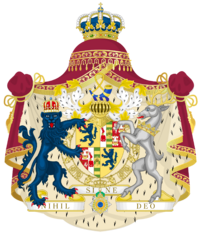Economy of Mascylla
This article is incomplete because it is pending further input from participants, or it is a work-in-progress by one author. Please comment on this article's talk page to share your input, comments and questions. Note: To contribute to this article, you may need to seek help from the author(s) of this page. |
 Köpenick, the financial hub of Mascylla | |
| Currency | Karning (KN, Ӄ) |
|---|---|
| 1 January – 31 December | |
Trade organisations | TU, ITO, CBEA |
| Statistics | |
| GDP | |
GDP growth | 1.9% (2017) 1.5% (2018) 1.2% (2019) 1.4% (2020) |
GDP per capita | |
GDP by sector | agriculture: 1%, industry: 38%, services: 61% |
| 1.68% (2017) 2.02% (2018) 1.93% (2019) | |
Population below poverty line | |
Labour force | |
Labour force by occupation | agriculture: 1.8%, industry: 27.5%, services: 70.7% |
| Unemployment | |
Average gross salary | Ӄ3,804 monthly (2015) |
| Ӄ2,137 monthly (2016) | |
Main industries | consumer electronics · financials · insurance · paper and pulp · petroleum · metals · shipbuilding · textiles · tourism |
| External | |
| Exports | |
Export goods | motor vehicles, machinery, chemicals, computer and electronic products, electrical equipment, pharmaceuticals, metals, transport equipment, foodstuffs, textiles, rubber and plastic products |
Main export partners | |
| Imports | |
Import goods | machinery, data processing equipment, vehicles, chemicals, oil and gas, metals, electric equipment, pharmaceuticals, foodstuffs, agricultural products |
Main import partners | |
FDI stock | |
Gross external debt | $3.478 trillion (March 2019) |
| Public finances | |
| Revenues | 61.1% of GDP (2018) |
| Expenses | 56.4% of GDP (2018) |
| Economic aid | donor: ODA; $42.6 billion (2019) |
| Domestic: AAA Foreign: AAA Outlook: Stable | |
Foreign reserves | |
All values, unless otherwise stated, are in US dollars. | |
The economy of Mascylla is a highly developed and free-market-oriented social market economy. It has the world's single largest economy measured by nominal GDP and the second-largest by purchasing power parity figures. It is the single largest economy in Telmeria and Berea respectively, and one of the most technologically sophisticated and innovative economies in the world.
In 2016, Mascylla was the second-largest goods exporter in the world and the third-largest goods importer. It also had the second-largest inward foreign direct investment, and the third-largest outward foreign direct investment. Mascylla is one of the most globalised economies, and has achieved the highest trade surplus globally in 2018. With more the 52% of its imports and its exports, the Telmerian Union (TU), including its other four members states, remains in 2020 the most notable trade partners of Mascylla. The service sector contributes around 61% of national GDP, industries 38%, and agriculture about 1%. Exports generally account for 45% of national output. For its outward trade relations and a good composition in balanced export and import affairs, Mascylla's economies is dubbed as "one of the world's most stable economies", and it maintains free trade agreements with a number of countries, including the TFTA, Melasia, Algaria, X. Employed Mascyllary citizens statistically have the highest household income among TU member states, and the fifth-highest average median income in 2016. Mascylla is one of the most important immigration destinations in the world, hosting the second-highest number of international migrants at about 10.04 million people.
Mascylla has historically been rich in timber, copper, iron, and salt. Some minor reserves of oil and natural gas are exploited in northern Aldia since antiquity. In the 19th century, Mascylla was one of the earliest countries to industralize and spearheaded economic development in Telmeria after the War of the Five Kings, and by 1890, Mascylla had overtaken the Cuthish Empire as the world's most productive economic power. Though growth was largely hindered by the Great War and the Mascyllary Revolution, Mascylla continues to represent a formbídable economic power with political significance. Until the end of the Great Game, Mascylla mined for uranium in the Weißenhaupt mountains.
Mascylla's energy is sourced predominently by natural gas and lignite (33.2%), followed by renewable energies such as solar and wind, nuclear power, other forms of coal, and oil. Mascylla is one of the first major industralised nations committed to a renewable energy transition, called Energienwende, being the world's largest producer of wind turbines. The country aims to expand renewable energy contribution to 90% of the national output by 2050. Mascylla also successfully implements the economic model known as "Mittelstand", small and medium-sized companies, ruled privatly. Of the world's 500 largest stock-market-listed companies measured by revenue in 2014, 94 are headquarted in Mascylla. 31 major Mascylla-based companies are included in the MAIX, the prime Mascyllary stock market index which is operated by the Flussmund and Königsreh Stock Exchanges, among the world's largest stock exchanges by trading volume and market capitalization.
The Great Bank of Mascylla is the country's central bank, and since 1804 government involvement is managed by the Ministry of Finance of the Realm, being responsible for setting interest rates, quantitative easing, and forward guidance. The currency of Mascylla is the karning, which is the world's single largest reserve currency, is also one of the 10 most-valued currencies in the world, second most traded currency in the foreign exchange market, and most widely used currency for international trade. Furthermore, several sovereign states use the karning as a de facto currency.
